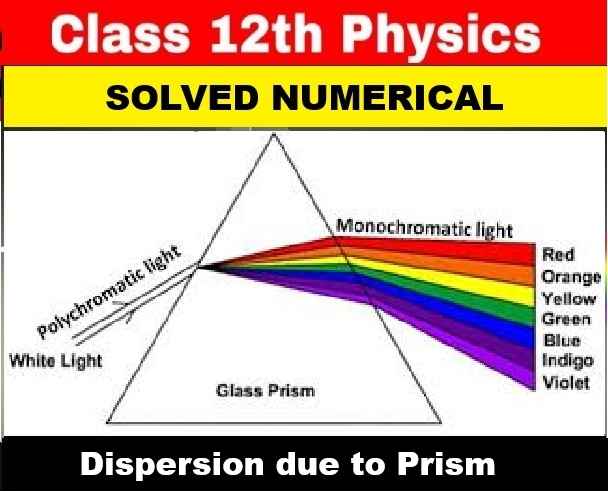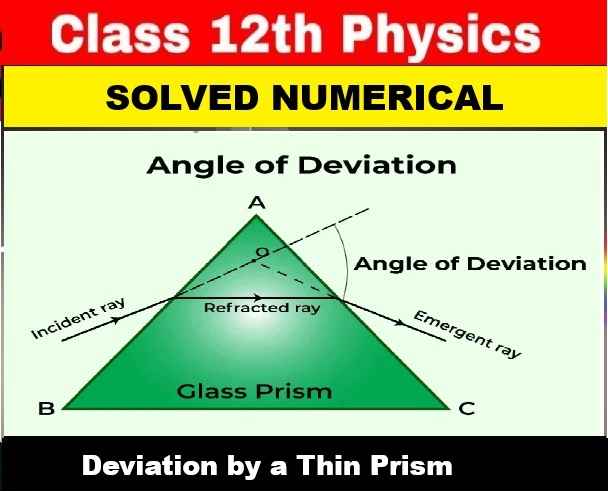Endocrine System Class-10 Long and Structured Questions Goyal Brothers ICSE Biology Solutions Ch-11 . We Provide Solutions of long Answer Questions and Structured Questions of Exercise-11 Endocrine System. All solutions are given as council prescribe guideline for next upcoming exam. Visit official Website CISCE for detail information about ICSE Board Class-10 Biology.
Ch-11 Endocrine System Long and Structured Questions
| Board | ICSE |
| Publications | Goyal Brothers publications |
| Subject | Biology |
| Class | 10th |
| Writer | Dr. K.K. Aggrawal |
| Chapter-11 | Endocrine System |
| Topics | Solutions of Long Answer and Structured Questions |
| Edition | for 2022-2023 Academic Session |
D. LONG ANSWER QUESTIONS
Ch-11 Endocrine System Brothers Prakashan ICSE Class-10 Biology Solutions
(Page-168)
Question 1. Name the hormones which lead to the following conditions
(i) Diabetes Mellitus
(ii) Myxoedema
(iii) Gigantism
(iv) Exophthalmic goitre
Answer :
(i) insulin,
(ii) Hyposecretions Thyroxine
(iii) Somatotropic Growth Hormones
(iv) Hypersecretion of Thyroxine
Question 2. Name the hormone responsible for the following functions
(i) Converting glycogen to glucose
(ii) Regulates basal metabolism
(iii) Ossification of bones
(iv) Prepares the body during emergency
(v) Responsible for normal growth of the whole body
Answer :
(i) glucagon
(ii) Thyroxine
(iii) Parathyroid hormone
(iv) Adrenaline hormone
(v) growth hormone
Question 3. Study the diagram given below and then answer the questions that follow :
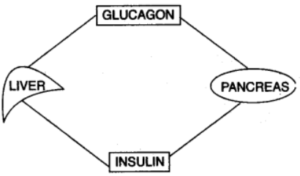
(i) Name the cells of the pancreas that produce (1) glucagon (2) insulin.
(ii) State the main function of (1) glucagon (2) insulin.
(iii) Why is the pancreas referred to as an exo-endocrine gland ?
(iv) Why is insulin not given orally but is injected into the body ?
(v) What is the technical term for the cells of the pancreas that produce endocrine hormones ?
(vi) Where in the body is the pancreas located ?
Answer :
(i) (1) Glucagon—Produced in alpha cells of pancreas.
(2) Insulin—Produced in beta cells of pancreas.
(ii) (1) Glucagon—It helps to convert glycogen to glucose when blood glucose level falls.
(2) Insulin—It helps to convert excess glucose to glycogen when there is higher level of glucose in blood.
(iii) It is both exocrine as well as endocrine gland. As exocrine, it secretes pancreatic juice containing digestive enzymes and pour them into duodenum part of intestine through pancreatic duet. As endocrine, it secretes hormones like insulin, glucagon and somatostatin and pour them directly into blood.
(iv) Insulin is a protein by composition so if it is given orally it will get digested in the stomach and will not be able to perform its function.
(v) Islets of Langerhans.
(vi) In the abdomen in the loop of small intestine close to duodenum part of small intestine.
E. STRUCTURED QUESTIONS
Ch-11 Endocrine System Brothers Prakashan ICSE Class-10 Biology Solutions
(Page-169)
Question 1. Complete the following table by filling in the blanks from 1 to 10 with appropriate terms.
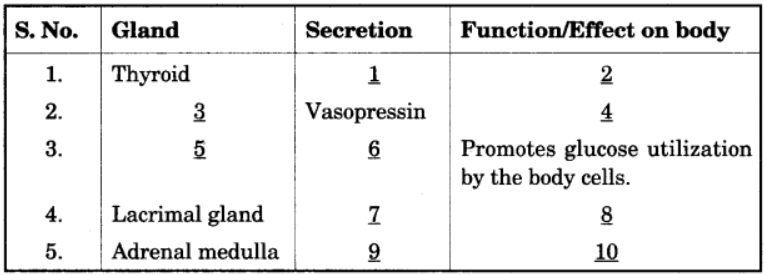
Answer :
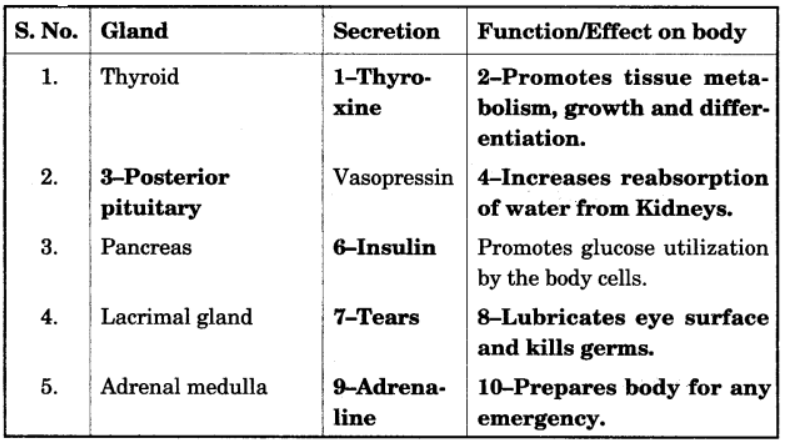
Question 2. Complete the following table by filling in the blanks 1 to 10 which the appropriate terms:

Answer :
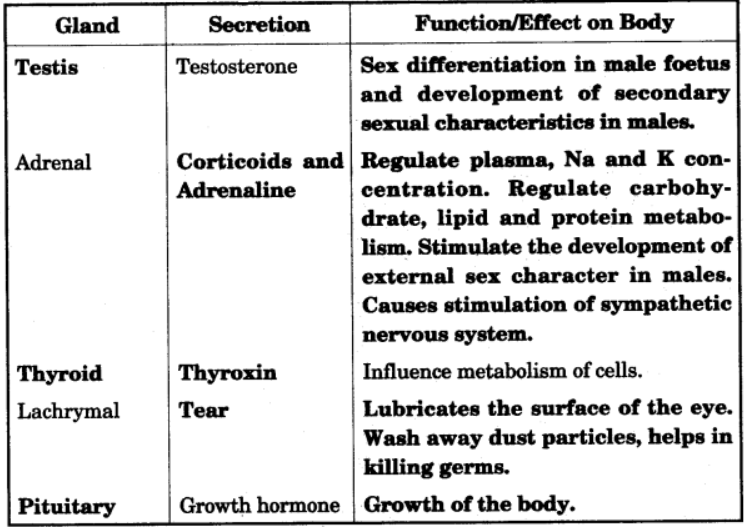
Question 3. Complete the following paragraph by filling in the blanks (i) to (ii) with appropriate words :
The amount of urine output is under the regulation of a hormone called (i) ……… secreted by the (ii) ……… lobe of the pituitary gland. If this hormone secretion is reduced, there is an increased production of urine. This disorder is called (iii) ……… Sometimes excess glucose is passed with urine due to hyposecretion of another hormone called (iv) ……… leading to the cause of a disease called (v) ……… .
Answer :
(i) Antidiuretic hormone
(ii) Posterior
(iii) Diabetes insipidus
(iv) Insulin
(v) Diabetes mellitus
Question 4. Given below is the outline of the human body showing the important glands :
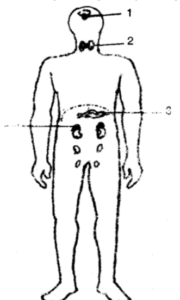
(i) Name the glands marked 1 to 4.
(ii) Name the hormone secreted by part 2. Give one important function of this hormone.
(iii) Name the endocrine part of the part numbered 3.
(iv) Why is the part labelled 1 called, the master gland ? Which part of the forebrain controls the gland labelled 1 ?
(v) Name the gland, that secretes the ’emergency hormone’.
Answer :
(i) 1. Pituitary gland.
2. Thyroid gland
3. Pancreas
4. Adrenal gland
(ii) Thyroxine. It regulates basal metabolism of the body.
(iii) Islets of Langerhans.
(iv) Because it controls the secretions of all the other endocrine gland. Hypothalamus controls it.
(v) Adrenal medulla (part of Adrenal gland.)
Question 5. Given below is an outline of the human body showing the important glands.
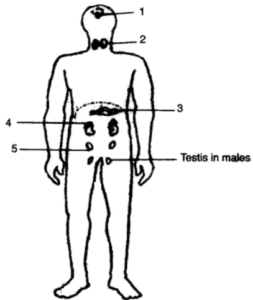
(i) Name the glands marked 1 to 5.
(ii) Name the hormone secreted by 2. Give one important function of this hormone.
(iii) Name the endocrine cells present in part 3.
(iv) Name the hormone secreted by part 4. Give one important function of this hormone.
Answer :
(i) 1—Pituitary gland
2— Thyroid gland
3— Pancreas
4— Adrenal gland
5— Ovary.
(ii) The hormone secreted by part 2 is thyroxine.
Function: Regulates the basal metabolism.
(iii) The endocrine cells present in part 3 is Islets of Langerhans.
(iv) The hormone secreted by part 4 are adrenaline.
Function: Prepares body for any emergency situation.
Question 6. The diagram given below represents the location and structure of an endocrine gland. Study the same and answer the questions that follow:
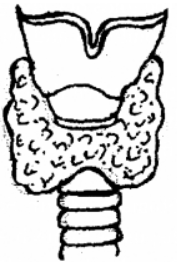
(i) Name the endocrine gland shown in the diagram.
(ii) Name the secretion of the gland which regulates basal metabolism.
(iii) Name the mineral element required for the synthesis of the above mentioned hormone.
(iv) Name the disease caused due to undersecretion of the above mentioned hormone in children.
(v) Name the disease caused due to hypersecretion of the above mentioned hormone.
Answer :
(i) Thyroid gland
(ii) Thyroxine
(iii) Iodine
(iv) Cretinism
(v) Exophthalmic goitre / Grave’s disease.
— : End of Endocrine System Class-10 Long and Structured Questions Goyal Brothers Solutions :–
Return to :- ICSE Biology for Class 10 Goyal Brothers Prakashan solutions
Thanks

